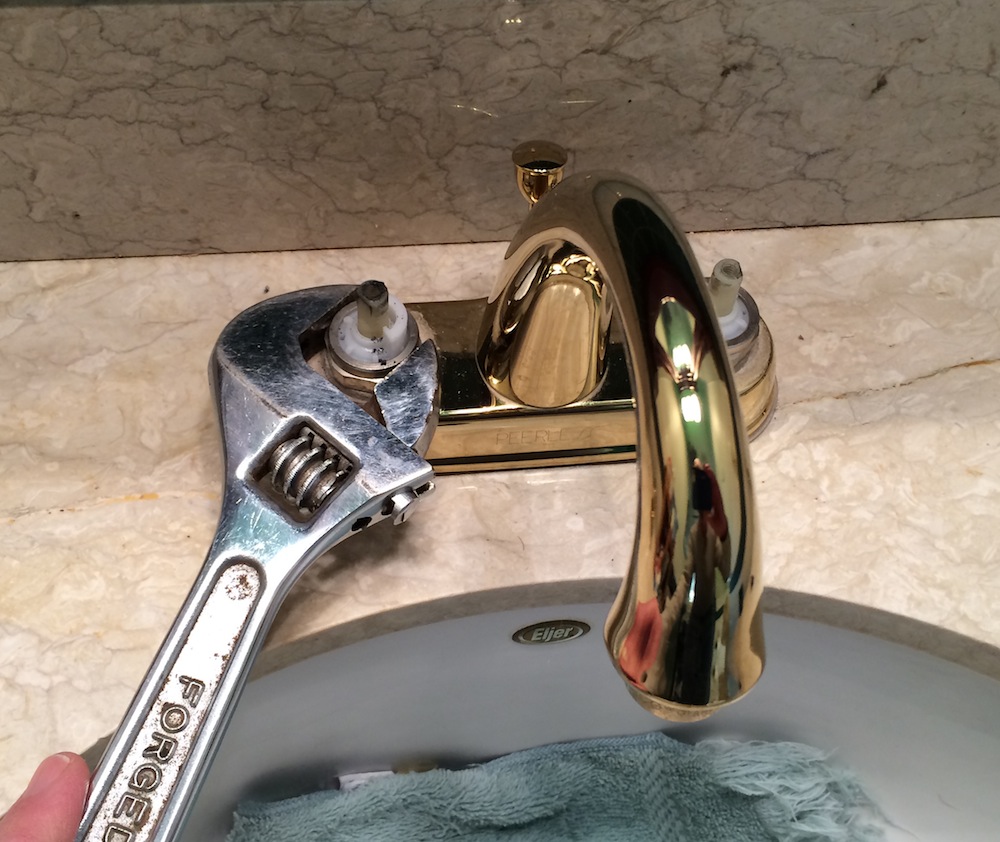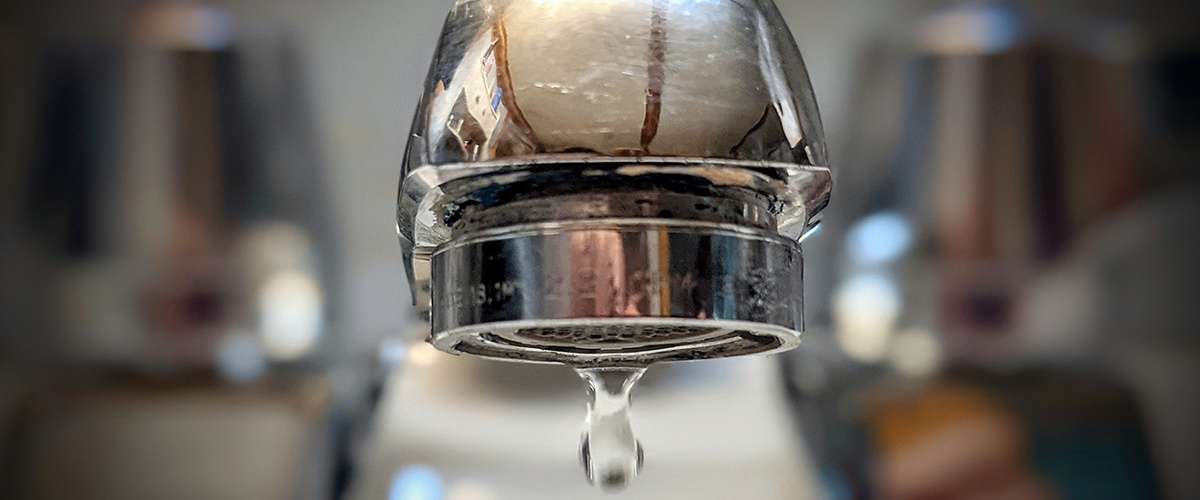My Motives Behind Correcting a Dripping Faucet
My Motives Behind Correcting a Dripping Faucet
Blog Article
We have encountered the article pertaining to How to Fix a Dripping or Leaky Faucet down the page on the internet and reckoned it made perfect sense to talk about it with you over here.

Dripping faucets may feel like a small inconvenience, however their effect surpasses just the nuisance of the audio. From wasting water to sustaining unnecessary economic costs and wellness dangers, disregarding a trickling tap can result in various consequences. In this short article, we'll delve into why it's crucial to resolve this common house concern quickly and efficiently.
Wastefulness of Water
Environmental Impact
Trickling taps add substantially to water wastage. According to the Epa (EPA), a solitary tap leaking at one drip per second can throw away greater than 3,000 gallons of water each year. This not just pressures water resources however likewise impacts communities and wild animals based on them.
Financial Costs
Increased Water Costs
Past the environmental influence, dripping faucets can pump up water bills considerably. The collected wastage with time equates into greater energy expenses, which can have been stayed clear of with timely repairs.
Prospective Residential Property Damage
Moreover, extended leaking can cause harm to components and surfaces bordering the faucet. Water buildup can create staining, deterioration, and even structural concerns if left ignored, causing extra repair service expenses.
Health and wellness Problems
Mold And Mildew and Mold Growth
The continuous presence of dampness from a leaking faucet creates an excellent setting for mold and mildew development. These fungi not only compromise interior air high quality but likewise position wellness dangers, particularly for individuals with respiratory problems or allergic reactions.
Waterborne Conditions
Stationary water in dripping faucets can end up being a breeding ground for germs and various other pathogens, raising the threat of waterborne illness. Impurities such as Legionella bacteria grow in stagnant water, possibly leading to serious illnesses when consumed or breathed in.
DIY vs. Expert Repair work
Pros and Cons of Do It Yourself Repair Service
While some might try to take care of a leaking faucet themselves, DIY repair services include their own collection of difficulties. Without proper understanding and devices, DIY attempts can exacerbate the issue or bring about insufficient repairs, extending the trouble.
Advantages of Hiring a Specialist Plumber
Hiring a specialist plumber makes certain that the underlying root cause of the leaking tap is dealt with successfully. Plumbing professionals possess the proficiency and equipment to diagnose and fix tap problems effectively, saving time and reducing the risk of additional damage.
Step-by-Step Guide to Fixing a Dripping Faucet
Devices Called for
Before trying to take care of a dripping faucet, collect the necessary tools, including a flexible wrench, screwdrivers, substitute parts (such as washers or cartridges), and plumber's tape.
Usual Faucet Issues and Their Solutions
Determine the type of tap and the specific problem triggering the drip. Common troubles include worn-out washers, rusty valve seats, or defective O-rings. Refer to supplier guidelines or on-line tutorials for detailed advice on repair services.
Preventive Measures
Normal Upkeep Tips
To stop dripping taps, perform routine upkeep such as cleansing aerators, checking for leaks, and replacing worn-out parts promptly. Furthermore, take into consideration setting up water-saving devices or updating to much more effective fixtures.
Relevance of Prompt Repair Works
Attending to leaking faucets as soon as they're observed protects against more water waste and prospective damage, eventually saving both water and money in the future.
Influence On Home Worth
Understanding of Well-Maintained Residential Property
Keeping a home in good condition, including addressing maintenance concerns like leaking taps, improves its regarded worth and charm among potential purchasers or occupants.
Impact on Resale Worth
Properties with well-kept plumbing components, including faucets, command greater resale values in the realty market. Resolving leaking faucets can add to a positive impression during home inspections and arrangements.
Environmental Obligation
Individual Payment to Preservation
Taking responsibility for taking care of leaking faucets straightens with broader efforts towards water conservation and environmental sustainability. Every person's actions collectively make a substantial influence on maintaining priceless sources.
Lasting Living Practices
By prioritizing punctual repair work and adopting water-saving behaviors, people add to lasting living practices that profit both present and future generations.
Final thought
Attending to a leaking faucet goes beyond simple benefit; it's an important step toward preserving water, decreasing monetary expenses, and securing wellness and home. Whether with DIY repairs or specialist assistance, doing something about it to repair leaking faucets is a small yet impactful way to advertise accountable stewardship of sources and add to a healthier, much more sustainable future.
How to Fix a Leaky Faucet: Step-by-Step Repair Guide
A leaky faucet may seem like a simple annoyance, but if it's not fixed promptly, that leak could cost hundreds to potentially thousands. From water damage to mold, mildew, and high water bills, even a tiny leak can be catastrophic if left unattended. Damage like this can even affect the overall value of your home, so it's important to take the right approach for leaky faucet repair. You may need the help of a plumber in some cases, but we've got a few tips you can try on how to fix a leaky faucet before calling the pros.
Four Faucet Types
When you're learning how to fix a leaky faucet, the first step is knowing what kind of faucet you're working with! There are four common types.
Cartridge Faucets
Cartridge faucets come in one- or two-handled varieties. In one-handled cartridge faucets, hot and cold water combines in a single cartridge. In the two-handled versions, hot and cold water are controlled separately and mixed in the faucet.
Ball Faucets
Ball faucets have a single lever you push up and down to adjust the pressure and rotate to change the temperature. A slotted metal ball controls the amount of water allowed into the spout.
Compression Washer Faucets
They're the oldest type of faucet, but they're still used in many homes — especially older ones. Compression faucets have two separate handles that, when turned, raise or lower the washer that seals a water valve. This valve stops water from flowing through the faucet when it is turned off.
Disc Faucets
Disc faucets rarely need to be repaired due to their maintenance-free design. The water flow is controlled by two discs — the upper one raises and lowers against a fixed lower disc, creating a watertight seal. If your disc faucet starts leaking, you may need to replace the seals or clean residue buildup from the inlets.
Fixing a Leaky Faucet
Step 1: Turn Off the Water
Whether you're learning how to fix a leaky bathtub faucet or how to fix a leaky kitchen faucet, always turn off the water supply to your working area when you're fixing a leak. The last thing you want is a flood added to your list of things to fix.
Look for the shutoff valves below your sink or around the tub and turn them clockwise to stop the water flow. If your faucet doesn't have shutoff valves, you may need to turn off the water for the whole house. Check to make sure it's off by turning the faucet on. If nothing comes out, you're ready to start the repair.
Step 2: Take Apart the Faucet
How you disassemble your faucet depends on the type of fixture you have. You can use a flathead screwdriver to remove the caps on top of the handle or handles for cartridge and compression faucets. Inside, you should see handle screws. Unscrew these with a screwdriver to remove the handle.
Disc- and ball-style faucets will typically have an inlet screw near the handle, and removing that will reveal the interior of the faucet.
Detach the Valve Stem
For cartridge- and compression-style faucets, you'll see the inner valve stem or cartridge once you remove the faucet handles. If you have a compression faucet, unscrew the brass valve stem. If you have a cartridge faucet, pull out the cartridge. If your cartridge has been in place for a while, it may require some tools or extra force to remove it due to mineral deposits.
Examine and Replace Parts
Once you've removed the parts, check them out to confirm what needs to be replaced. You may see corroded rubber washers, O-rings, stems, or cartridges. On a ball-style faucet, check the seats and springs for damage.
If you need to repair a leaky disc faucet, check the inlet and seals on the lower disc.
Once you determine what parts must be replaced, visit your local hardware store. Bring the damaged parts with you to ensure you can purchase the correct components to replace them.
Clean Valves and Faucet Cavity
If you've removed a stem or cartridge, you may notice mineral buildup in the faucet's threads. Use white vinegar to clean the valve seat by soaking it for a few minutes, then scrub it away with a soft toothbrush and rinse with warm water. You can also clean the interior of the faucet in the same way.
Reassemble the Faucet
Once your faucet is cleaned and the required parts have been replaced, it's time to reassemble it. Put the pieces back together and slowly turn the water supply back on. Doing this slowly is crucial because too much initial water pressure can damage the new hardware you've just installed.
https://homewarranty.firstam.com/blog/how-to-fix-leaky-faucet

I have been very interested in Water Dripping from Faucet: Why and How to Fix and I am praying you enjoyed reading the page. Sharing is nice. Helping others is fun. Thank you for your time. Come back soon.
Report this page